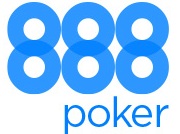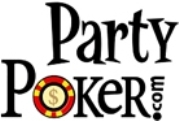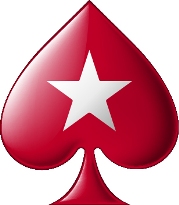When you get to the river in Poker Hold ’em and Pineapple Poker, you should take a few seconds to determine the best possible hand incorporating the five shared cards and any other two hole cards. We put a couple of Poker Hold ’em practice hands, but you should take the time now to play online poker for free at the play money tables, or with your computer software, to get as much poker practice as you can reading the board. Once you’re confident in your ability to recognize the best possible hand, continue on through this chapter.
Playing When You Have the Nuts
There’s no better feeling than seeing that last card come out and realizing you have the best possible hand. When you have the hand locked and can’t be beaten, you should think about how you can convince your opponents to put in as much of their money as possible. As an example, consider the hand in this figure:




 Comunity Cards
Comunity Cards

 Your Pocket Cards
Your Pocket Cards
You snuck up on your opponents in this hand, so they might put in money on their own
You were in the big blind in this hand. The small blind folded before the flop, but four other players called, leaving five players in the hand. You stayed in with your two overcards after another player bet on the flop, called on the turn with your overcards and a straight draw, and backed into the nuts on the river. What’s even more attractive about this hand is that the board contains four cards to the straight, the 6♣7♠8♥9♠, so any of the four remaining players with a Five or a Ten has made a straight as well. Of course, your straight is the best possible straight on a board where no flush or full house is possible, so you’re hoping that another player made a Ten-high straight, two pair, or a set. But how do you get the most money from your opponents in this case?
You could check and hope someone else bets the hand for you, giving you a chance to check-raise, but when you’re playing at lower limits ($10–$20 and below), the surest way to get money out of the other players is to bet. The other folks know, or should know, what the best possible hand is, but they might not be willing to believe you have the absolute nuts of JT when you bet from early position. In this dream sequence, the pot has the uncalled small blind, 10 small bets, and three large bets in it after the turn (in a $5–$10 game, that amounts to $79 after the $3 rake is taken out), so a player with two pairs or a set might call you, and someone with a Ten might raise you.
Tip: In general, you should avoid clever plays when you’re playing Hold ’em at $10–$20 limits and below online. The players at these levels are more skilled than they used to be, but for the most part the less-skilled players aren’t aggressive enough to try to bet into a board where they don’t have the nuts, and the more skilled players aren’t foolish enough to bet into a board where they don’t have the nuts. If you know one or two of your opponents is habitually poker bluffing, or are insanely aggressive, you might be able to get in a check-raise every now and then, but why not let them raise your bet and try to bluff you out that way?
You should always pay attention to the texture of the board and your opponents’ betting patterns before you make your move with the nuts. Some players refuse to believe that their previously unbeatable hand has been overtaken by events. Some may fail to realize that there’s a flush or straight possible (they’re easy to overlook if you don’t take a second), or they may be steaming from a previous hand and want to soothe their savaged ego by winning the next hand with a show of aggression. If they want to try to knock you off the best hand, so be it. Thank them for the chips if you win it all, and don’t be too disappointed if you have to split the pot.
Playing When You Have a Strong Hand
Playing the river’s easy when you have the best possible hand, but things get a bit more complex when you have a strong hand that’s not the nuts. As an example, consider the hand in the next figure:




 Comunity Cards
Comunity Cards

 Your Pocket Cards
Your Pocket Cards
How do you play when you’re not guaranteed part of the pot?
There’s a lot going on in this pot. You have the best two-pair hand, but you’re beaten by any set or any QT that makes a straight. But how much do you have to worry about the straight? Assuming you’ve been betting the whole way and nobody raised you on the turn, you have a pretty good chance of winning this hand. You always have to be on guard when there’s a straight on board; but in this type of situation, where someone would have to have paid a small bet and a big bet to get one of the four Jacks, you’ll have to accept that you’ll have to pay off a raise and that you got beat while you were almost a 7 to 1 favorite after the flop and a 9 to 1 favorite after the turn.
Notice how the situation changes if that last J♦ were the J♥, though. Instead of drawing at four outs, an opponent holding a reasonable hand, such as Q♥T♥, could win by drawing any of the remaining nine hearts or any of the three non-heart Jacks on either the turn or river. In that case, you’re only a 3 to 2 favorite after the flop and a 3 to 1 favorite after the turn, so you can expect to take your share of losses. When that final heart hits on the river, you should check and, if you feel you have a shot at the pot, go ahead and call.
The math for deciding when to call in limit Hold ’em is relatively simple. If there’s any doubt that your opponent has you beat, you can check the pot odds to see if it’s correct to call. For example, if it would cost you $10 to call for a shot at a $90 pot, you need to decide whether your opponent would bluff one out of 10 times. If your opponent would bluff every now and then, you should call.
Playing When You Have a Marginal Hand
You need to start thinking about folding on the river when your hand isn’t close to the strongest possible hand. Again, however, you need to take both your opponents’ tendencies and the texture of the flop into account when deciding whether or not to bet or call on the river. Remember the hand in Figure 11.1, but give yourself two pairs instead of the one-card straight made possible by the board. You can assume with some certainty that none of your opponents can beat your two pair with another two pair or a set, but there’s a very good chance that someone caught a straight on the end. If a fairly solid player who hadn’t bet before the river suddenly bets, you should give them credit for a hand and fold. If you’re uncertain about whether you’re beat, go ahead and call. It’s better to lose the $10 it’ll cost you to call than the $90 in the pot.
Another situation you need to look out for is when you have a top pair but another player has raised consistently throughout the hand. For example, if you have A♠J♠ in the big blind and called a pre-flop raise, you’re pretty much stuck checking and calling when the board comes J♥3♦7♣. You lose to anyone who has 33, 77, JJ, QQ, KK, or AA (J7 and 73 are unlikely given the raise), but you have to be on guard against giving away a pot to an aggressive player who is pressing with AK.
Playing When You Have a Weak Hand
This situation is easy to play. If you’re drawing at a flush or straight and didn’t hit it, fold, unless you backed into a top pair, and the player who drove the betting through the turn checked on the river. Even then, you should check, unless you’re last to act and you have top pair with a decent kicker.










